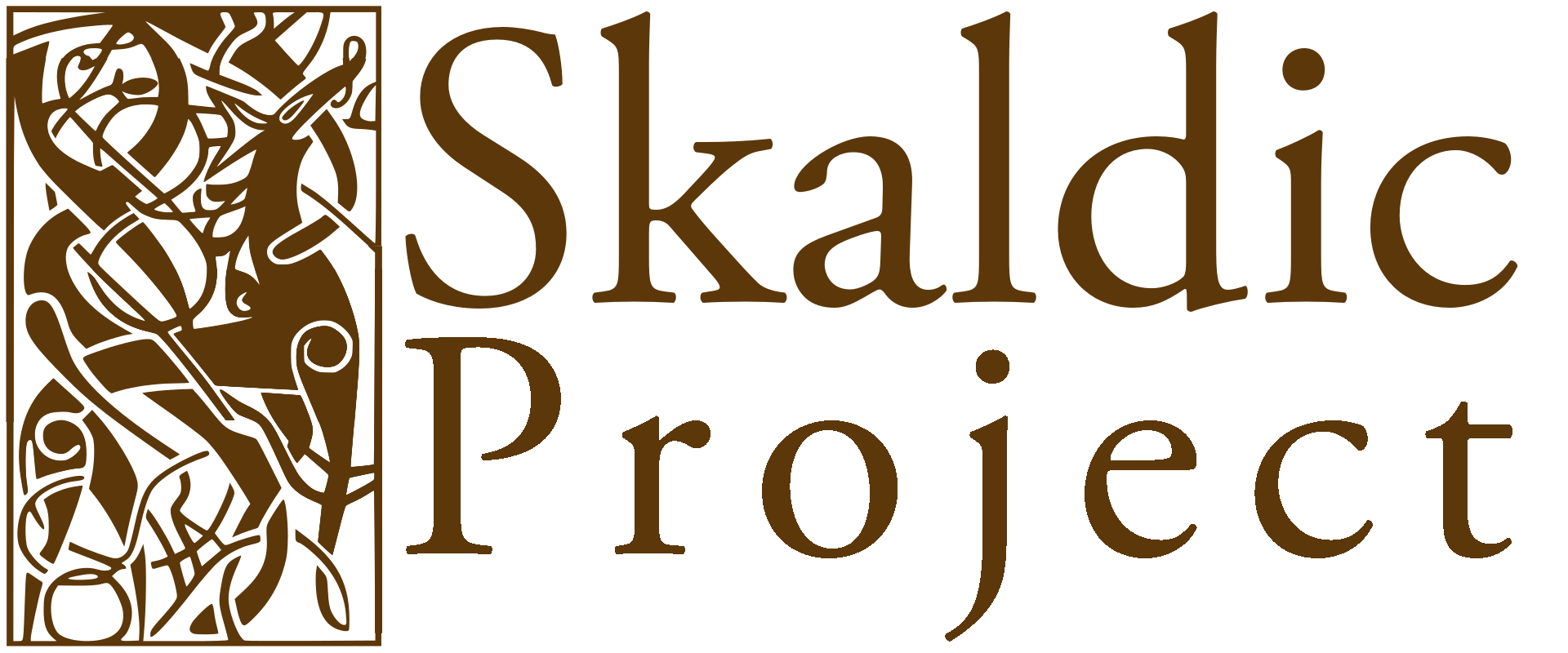Note to Sigv ErfÓl 2I
[1-4]: The helmingr may be corrupt, being preserved in only two mss and containing several metrical irregularities. In l. 1 (Type A2l) the frumhending (first part of an internal rhyme) is in position 2 on a syllable with secondary stress (though the same feature occurs in st. 21/1, which curiously also seems to refer to Opplandene, by a pun); l. 2 has elision on ‑a ok in a Type D4 line; l. 3 has alliteration on the second element of the cpd kristnihald, and l. 4 violates Craigie’s Law (on which, see Gade 1995a, 29-30) by having a long nominal syllable (sverðs) in position 4. The interpretation of these lines is also uncertain. (a) This edn tentatively follows Kock (NN §657) in keeping the readings of Flat, though a word such as til still needs to be added in l. 1 (see also Note to l. 5, below). Kock’s interpretation involves reading ‘os næista’ (Flat), ‘os neista’ (761bˣ) as ôss gneista, lit. ‘god of the spark’ and assuming that gneisti is a heiti for ‘sword’ and that the whole makes a warrior-kenning. Kock adduces several parallels, including kennings with brands or elds as determinant, both of which can mean ‘sword’ as well as ‘fire’; cf. also Þul Sverða 8/1, 2, 7III and Note to 8/1III. The word ôss ‘god’ is both rare as a base-word (Meissner 264) and unexpected in Sigvatr’s poetry (by contrast with the avowedly pagan Edáð Banddr 8/7), though he does make use of individual gods’ names as base-words in kennings. It is conceivable that there is also a subtext here that Óláfr, the saint to be, is an ôss ‘god’ of the light of Christendom, with the word gneisti translated literally as ‘spark, fire’ (cf., e.g., the light imagery in ESk Geisl 1-3VII). Also problematic is veitir beita sverðs ‘benefactor of the swingers of the sword [WARRIORS]’ which Kock glosses as hövding eller bonde ‘chieftain or farmer’. This stretches the meaning of veitir somewhat, as it usually means ‘giver’ and in kennings is normally qualified by a word for treasure or weapons (Meissner 306). (b) Despite these difficulties, Finnur Jónsson’s alternative interpretation (Skj B; also Jón Skaptason 1983) is less convincing because it requires two further emendations (of hverr to hvers and beita to beitar in l. 4) and highly unnatural word order.
References
- Bibliography
- Skj B = Finnur Jónsson, ed. 1912-15b. Den norsk-islandske skjaldedigtning. B: Rettet tekst. 2 vols. Copenhagen: Villadsen & Christensen. Rpt. 1973. Copenhagen: Rosenkilde & Bagger.
- NN = Kock, Ernst Albin. 1923-44. Notationes Norrœnæ: Anteckningar till Edda och skaldediktning. Lunds Universitets årsskrift new ser. 1. 28 vols. Lund: Gleerup.
- Meissner = Meissner, Rudolf. 1921. Die Kenningar der Skalden: Ein Beitrag zur skaldischen Poetik. Rheinische Beiträge und Hülfsbücher zur germanischen Philologie und Volkskunde 1. Bonn and Leipzig: Schroeder. Rpt. 1984. Hildesheim etc.: Olms.
- Gade, Kari Ellen. 1995a. The Structure of Old Norse dróttkvætt Poetry. Islandica 49. Ithaca: Cornell University Press.
- Jón Skaptason. 1983. ‘Material for an Edition and Translation of the Poems of Sigvat Þórðarson, skáld’. Ph.D. thesis. State University of New York at Stony Brook. DAI 44: 3681A.
- Internal references
- Elena Gurevich (ed.) 2017, ‘Anonymous Þulur, Sverða heiti 8’ in Kari Ellen Gade and Edith Marold (eds), Poetry from Treatises on Poetics. Skaldic Poetry of the Scandinavian Middle Ages 3. Turnhout: Brepols, p. 804.
- Martin Chase (ed.) 2007, ‘Einarr Skúlason, Geisli 1’ in Margaret Clunies Ross (ed.), Poetry on Christian Subjects. Skaldic Poetry of the Scandinavian Middle Ages 7. Turnhout: Brepols, p. 7.
- Russell Poole (ed.) 2012, ‘Eyjólfr dáðaskáld, Bandadrápa 8’ in Diana Whaley (ed.), Poetry from the Kings’ Sagas 1: From Mythical Times to c. 1035. Skaldic Poetry of the Scandinavian Middle Ages 1. Turnhout: Brepols, p. 467.
